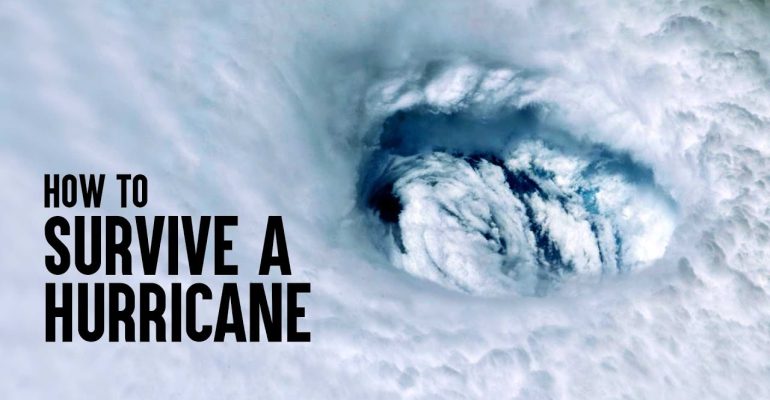Hurricane Safety Tips – Atlantic International University
August 25, 2022 2023-09-18 21:17Hurricane Safety Tips – Atlantic International University
What to do if a hurricane is forecasted? Don’t panic. All in one checklist, find the steps to take before a hurricane, as a hurricane approaches, during a hurricane, and after a hurricane.
If you live in a susceptible area, it’s especially important that you take precautions on how to survive a hurricane with these safety guidelines. All U.S. Atlantic seaboard and Gulf coastal areas are subject to hurricanes or tropical storms. See the 2019 Hurricane Forecast and 2019 Hurricane Names. The below checklist has been developed with tips from National Hurricane Center, FEMA, and the American Red Cross.
What is a Hurricane? A hurricane is a type of tropical cyclone that can cause torrential rains, high winds, storm surges, and flooding for 2 weeks or more over open water and can follow a path across the entire length of the eastern seaboard, its coastal areas, and barrier islands. According to the National Hurricane Center, a hurricane is primarily defined by its wind speeds, which must be 74 mph or greater (anything less, and the cyclone is classified as a tropical storm).
Safety Guidelines for Hurricanes Before a Hurricane:
– Secure your property. Permanent storm shutters offer the best protection for windows and doors. A second option is to board up windows with ?” marine plywood—cut to fit and ready to install. Tape does not prevent windows from breaking. Install straps or additional clips to securely fasten your roof to the frame structure. This will reduce roof damage. Trim trees and shrubs around your home to minimize the risk of broken branches and debris. Clear loose and clogged rain gutters and downspouts to prevent misdirected flooding. Determine how and where to secure your boat. Consider building a safe room. Keep articles in your basement elevated to avoid damage from even minor flooding. Buy a fire extinguisher. Make sure all pets have ID tags.
– Keep a well-stocked Emergency Survival Kit in case you lose power. Find all local emergency shelters. Know your evacuation route. Have a “to go” bag ready if needed. Fill plastic bottles with drinking water. Think about what you might need if you are isolated for a number of days and must endure a power outage. Fully fuel your vehicles. Download the Red Cross Emergency App for iPhone or Android. Or text: ”GETCANE” to 90999 As a Hurricane Approaches.
If a hurricane is likely in your area, you should: Stay informed by monitoring the storm via local radio, NOAA radio, TV, and internet. Secure your home and close storm shutters. Even awnings can be broken and picked up by strong winds and potentially become a projectile. Bring all lawn furniture, trash barrels, hanging plants, toys, and gardening tools inside. Turn off utilities if instructed by authorities to do so. Otherwise, turn the refrigerator thermostat to its coldest setting and keep its doors closed. Turn off propane tanks. Cell phone and charges. But avoid using the phone, except for serious emergencies. Have a certain amount of cash available. If power is lost, ATMs may not be working. Moor your boat if time permits. Ensure a supply of water for sanitary purposes such as cleaning and flushing toilets. Fill the bathtub and other large containers with water.
Have on hand: fire extinguisher, emergency/first aid kit, prescription medicines, flashlight/batteries, blankets/sleeping bags, cooking/eating utensils, canned foods, water bottles, jumper cables, paper maps, GPS, toilet paper, toiletries, rain gear, stay inside. You should evacuate under the following conditions: If you are directed by local authorities to do so. Be sure to follow their instructions. If you live in a mobile home or temporary structure—such shelters are particularly hazardous during hurricanes (no matter how well fastened to the ground). If you live in a high-rise building—hurricane winds are stronger at higher elevations. If you live on the coast, on a floodplain, near a river, or on an inland waterway.
If you feel that you are in danger, only return once the authorities declare it is safe. Avoid all flood waters! Never drive or walk on flooded roads. During a Hurricane, if you have not evacuated, go to your safe room. If you do not have a safe room, follow these guidelines: Stay indoors and away from windows and glass doors. Close all interior doors—secure and brace external doors. Keep curtains and blinds closed. Do not be fooled if there is a lull; it could be the eye of the storm—winds will pick up again. Take refuge in a small interior room, closet, or hallway on the lowest level. Lie on the floor under a table or another sturdy object.
Recovering from a disaster is usually a gradual process. Safety is a primary issue, as are mental and physical well-being. Let your friends and family know that you are safe. Document any damage with photos. Do NOT drink tap water unless authorized to do so.
























